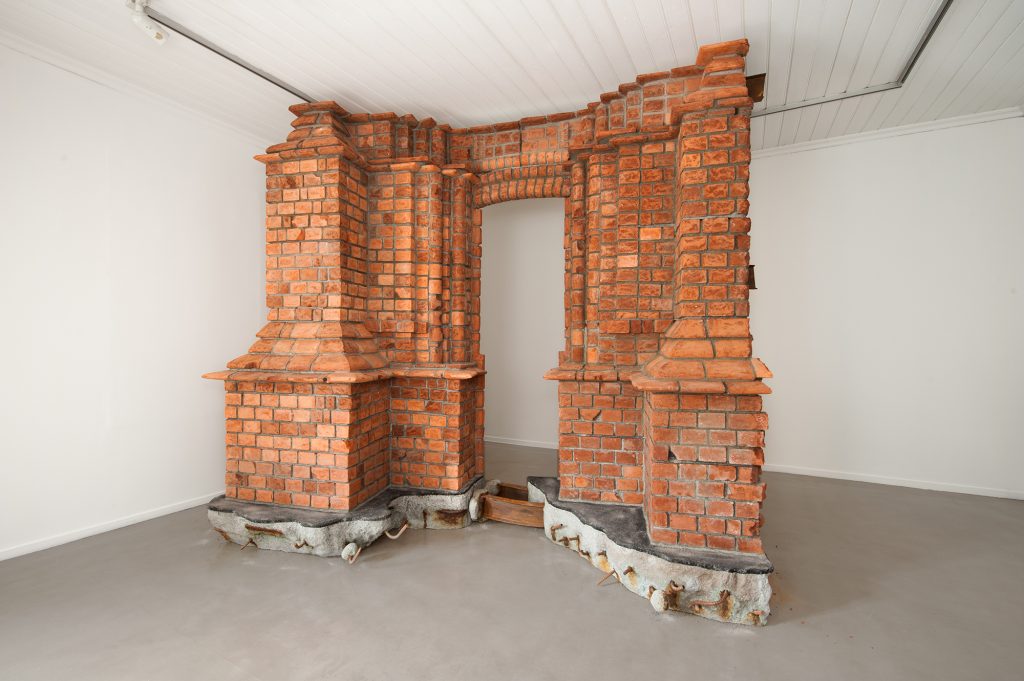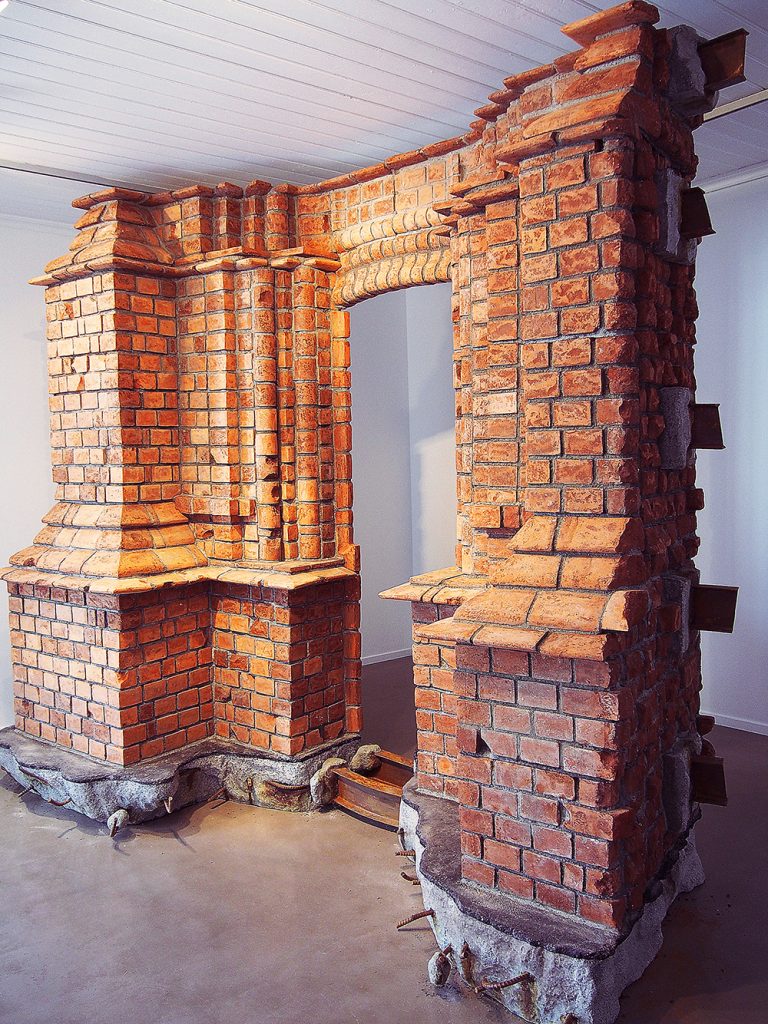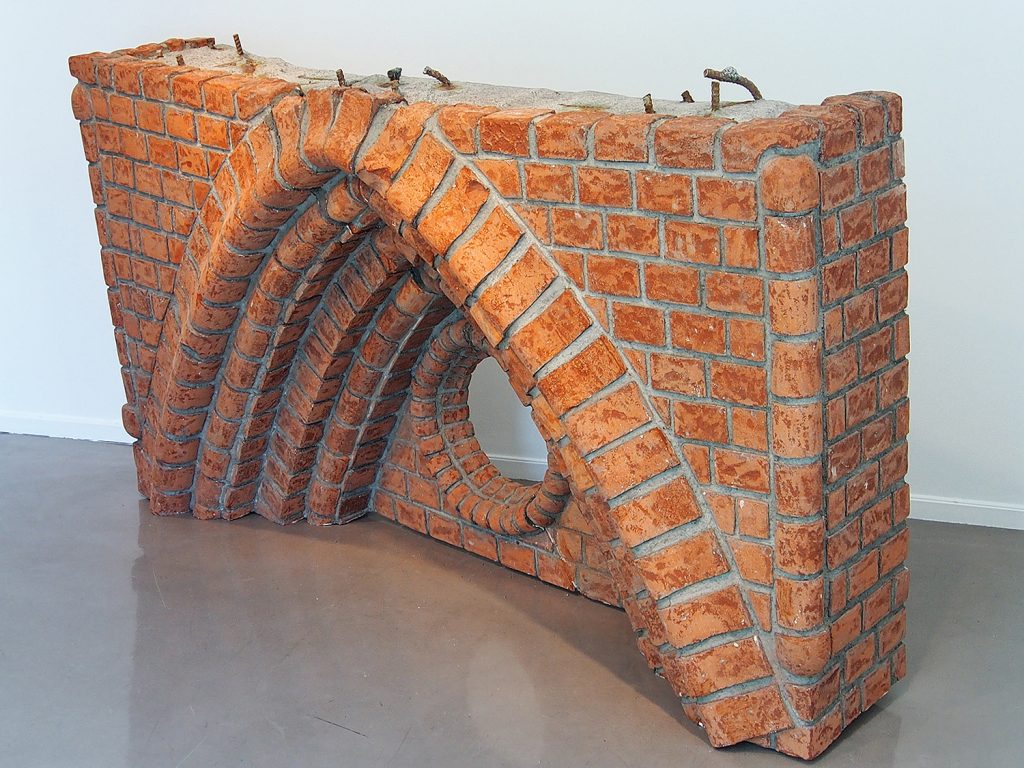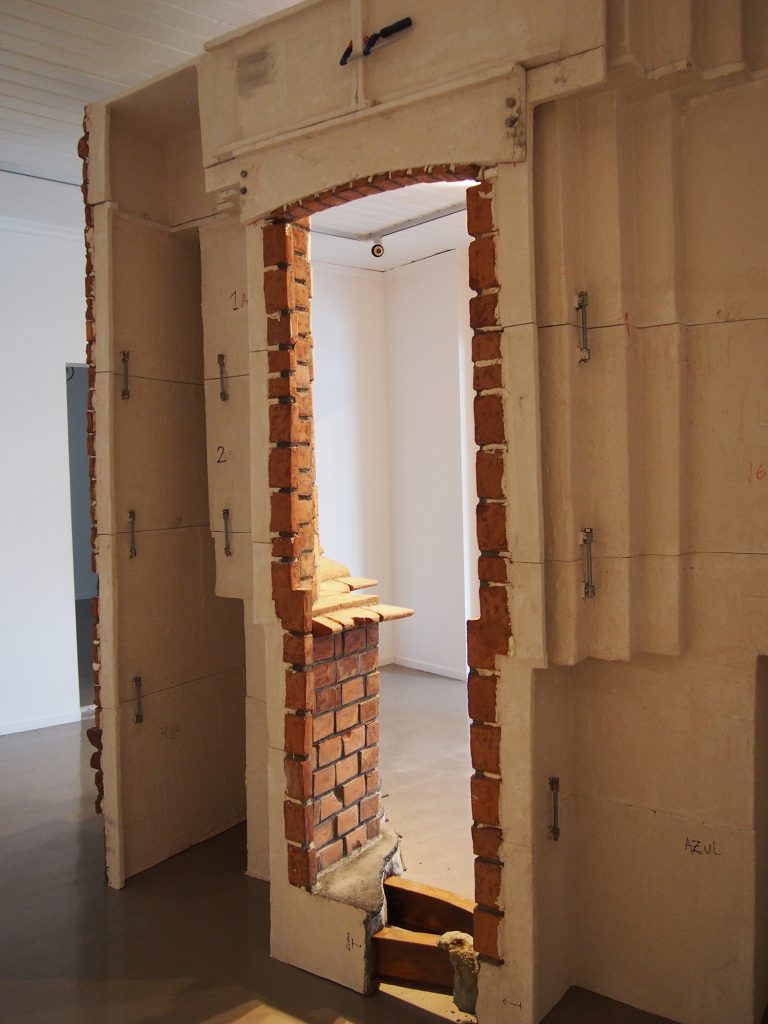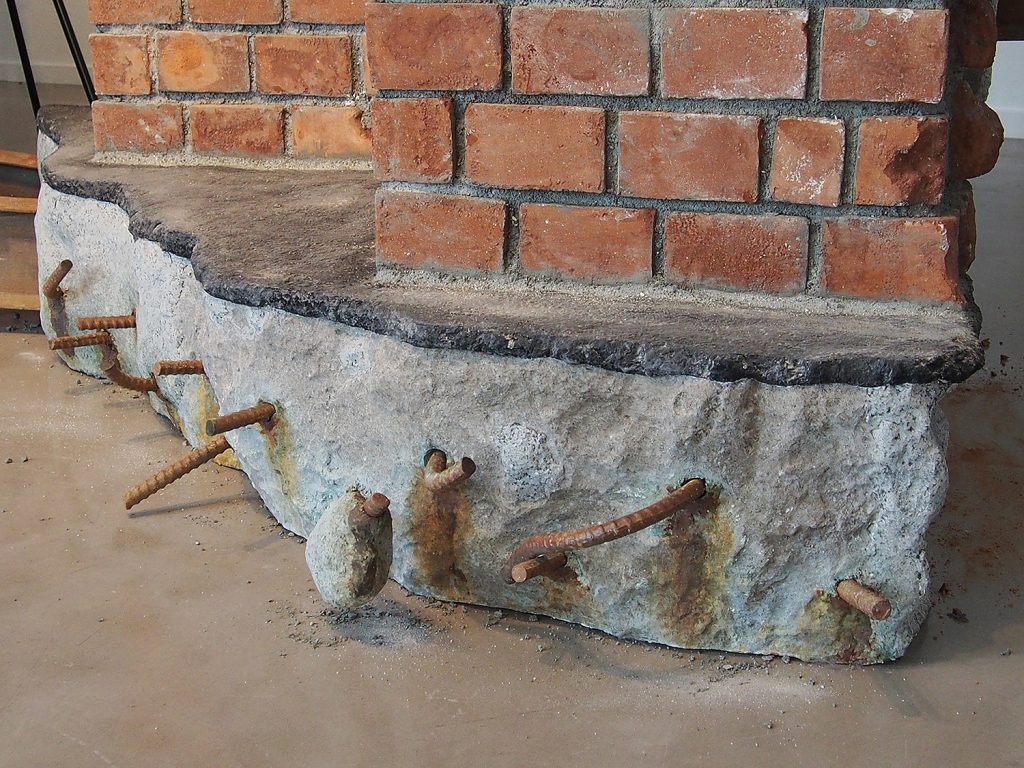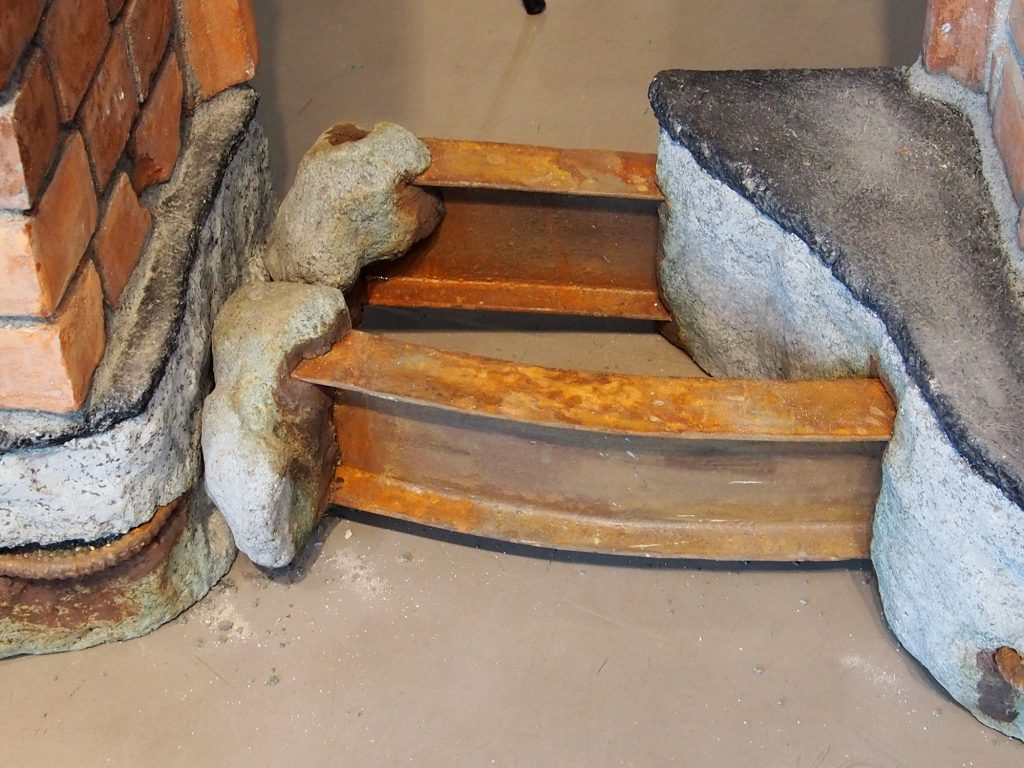Sculpture, 2014
Epoxy, fiberglass, paint, acrylic one, pigment and plastic F18
Dimensions: 300 x 100 x 280 cm
Image view: Akershus Kunstsenter, Oslo, Norway
By Rikke Komissar and Juan Andrés Milanés Benito
Many ideas and memories are tied to objects. The associations these objects can evoke vary greatly, depending on the setting, origin, culture and so on. It is a signal that comes automatically whenever we see something, touch something, or notice a scent. Based on our memories, our minds immediately try to recognize and identify experiences. The church is one of the oldest symbols in our society and has the potential to trigger a series of associations like dogmatism, the standardization of ideas and feelings, oppression, fellowship, exclusion, and more.
As the constitution for a Christian state, the Norwegian constitution has a religious foundation. How relevant is that today? Milanés’s piece ‘Extraction of the Stone of Madness’ invites us to reflect on that topic.
The piece recreates a structure that suggests an antique building. Historic and religious perhaps, but in actuality, it is a plastic copy of a brick building. It is so life-like that it is hard to believe it’s a plastic replica.
The constitutional context became a giant piece. An elegant commentary to the relationship between resistance and fragility. Nothing is carved in stone, not even monumental architecture. Important values can fall apart like a house of cards if we stop caring about them.
Part of the front of a church has been torn away from the building and has lost its function as an entryway. Is this the case of a lost face, a building stripped of its power, or is there another way to interpret the piece? Can we take this in a more positive light, where the church in the year 2014 opens its doors to the public? Perhaps it’s a reference to Kirkeforliket, the 2008 legislative compromise that took effect in 2012 in which there is an official separation between the state of Norway and the church. The ambiguous nature of this piece invites numerous discussions.
Milanés works primarily with installation and sculpture, and several of his pieces have been illusionary recreations of an original. By taking everyday objects and events out of their traditional context, he appeals to our collective consciousness. He encourages social association and reflection, which in turn offer the chance to see our daily lives and objects from a fresh perspective.

